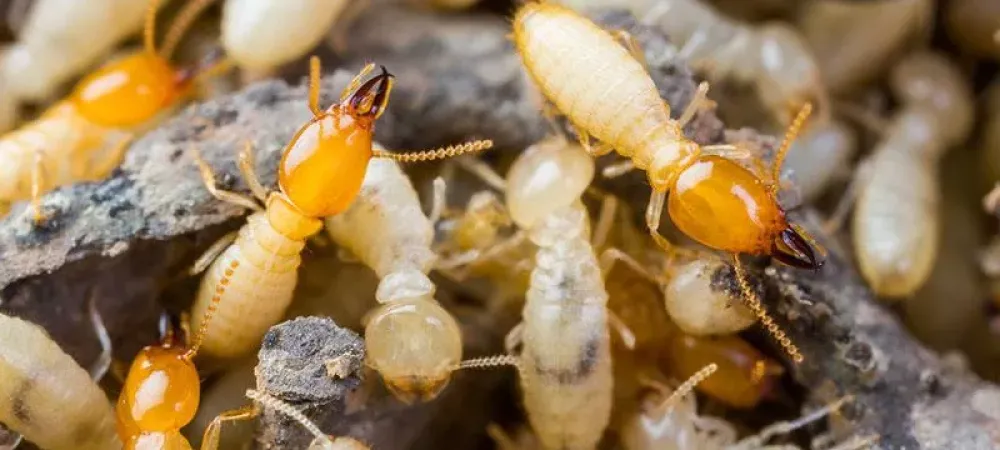How to Get Rid of Flying Termites

Swarmers, commonly referred to as flying termites, are a prevalent and highly destructive household pest. They typically emerge in significant quantities in the spring and summer seasons and are frequently confused with flying ants due to their similar appearance. Nonetheless, in contrast to ants, flying termites pose a greater threat, capable of inflicting severe damage to your property.
If you've noticed flying termites in or around your home, it's important to take immediate action to get rid of them before they cause any damage. Steps to getting rid of flying termites include:
- Identifying the type of termites
- Eliminating moisture
- Using chemical treatments
- Using natural methods
- Preventing future infestations
Identify the Type of Termites
Before you begin any treatment, it's important to identify the type of termites that have invaded your home. There are two main types of termites: subterranean termites and drywood termites. Subterranean termites typically live in the soil and create mud tubes to travel between their nests and food sources, while drywood termites live inside the wood they infest.
Flying termites are usually swarmers, which are reproductive termites that leave their nests to mate and start new colonies. While swarmers are usually a sign of a nearby termite infestation, they do not actually cause damage to your property. Instead, it's the worker termites that you need to worry about, as they are the ones that will feed on your wood and cause damage.
Eliminate Moisture
A crucial step in preventing and eradicating flying termites involves the elimination of any moisture sources in and around your home. Termites flourish in humid conditions, and by eradicating moisture, you can create an inhospitable environment for them.
Initiate the process by fixing any roof or plumbing leaks, ensuring the proper functioning of your gutters and downspouts. Additionally, it's essential to guarantee that your crawl space is adequately ventilated and that there are no instances of standing water near your home.
Use Chemical Treatments
Chemical treatments are the most effective way to get rid of termites, particularly if you have a large infestation. There are a variety of chemical treatments available, including liquid termiticides, bait systems, and foam sprays.
- Liquid termiticides are applied to the soil around your home and create a barrier that termites cannot cross.
- Bait stations work by attracting termites to a feeding station that contains poison, which they will then take back to their nest and spread to the rest of the colony.
- Foam sprays are injected directly into infested wood and kill termites on contact.
However, it's important to note that chemical treatments should only be used by professionals, as they can be dangerous if not used properly. Additionally, some chemicals may be harmful to pets and humans, so it's important to take appropriate safety measures.
Use Natural Methods
If you're inclined to steer clear of chemical treatments, there are several natural approaches you can employ to eliminate flying termites. Among the most potent natural methods is the use of nematodes, which are microscopic worms that prey on termites. Nematodes are readily available at most garden centers and can be applied to the soil surrounding your home.
Another natural remedy involves the use of orange oil, derived from orange peels, which has toxic properties for termites. Orange oil can be administered by injecting it directly into infested wood or by applying it to the soil surrounding your home.
However, natural methods are not a surefire way to get rid of termites. When dealing with an infestation, it is always best to contact your local pest control company to recommend the best treatment plan for your home.
Prevent Future Infestations
Once you've successfully eliminated your flying termite infestation, it's important to take steps to prevent future infestations. Some preventative measures you can take to prevent termites include:
- Regularly inspecting your home for signs of termites, such as mud tubes or wood damage.
- Avoiding wood-to-soil contact in your home's foundation, as this can provide termites with easy access to your home. Instead, use concrete or metal barriers to separate the wood from the soil.
- Removing any dead trees or stumps from your property, as they can attract termites.
- Keeping firewood away from your home and off the ground.
- Reducing moisture in and around your home by fixing leaks, improving ventilation, and using dehumidifiers in damp areas.
- Sealing cracks and crevices in your home's foundation and exterior walls to prevent termites from entering.
- Using treated lumber for any new construction or renovations in your home.
- Having regular professional termite inspections and treatments as necessary.
If you’re ready to prevent your home and live in the DFW, TX area, Myles Pest Services is here to help! We are a reliable termite control company that specializes in providing effective and affordable termite control treatments. Contact us to get started today!

